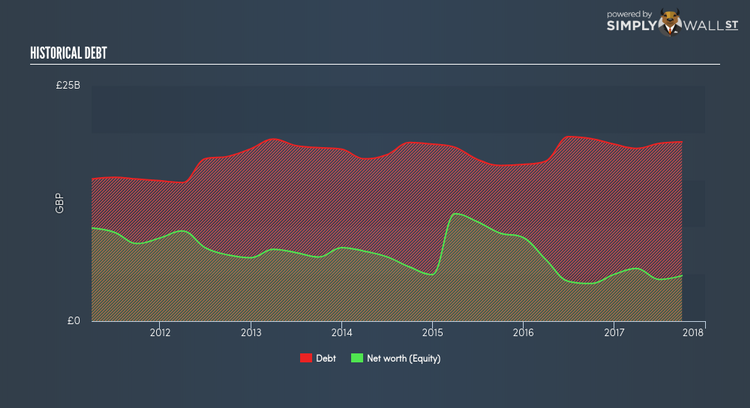What does GlaxoSmithKline plc’s (LON:GSK) Balance Sheet Tell Us Abouts Its Future?

Investors seeking to preserve capital in a volatile environment might consider large-cap stocks such as GlaxoSmithKline plc (LSE:GSK) a safer option. Market participants who are conscious of risk tend to search for large firms, attracted by the prospect of varied revenue sources and strong returns on capital. However, the key to their continued success lies in its financial health. Let’s take a look at GlaxoSmithKline’s leverage and assess its financial strength to get an idea of their ability to fund strategic acquisitions and grow through cyclical pressures. Remember this is a very top-level look that focuses exclusively on financial health, so I recommend a deeper analysis into GSK here. See our latest analysis for GlaxoSmithKline
How does GSK’s operating cash flow stack up against its debt?
GSK’s debt levels surged from £16,632.0M to £18,790.0M over the last 12 months , which is made up of current and long term debt. With this rise in debt, the current cash and short-term investment levels stands at £5,119.0M for investing into the business. Moreover, GSK has generated cash from operations of £6,497.0M during the same period of time, leading to an operating cash to total debt ratio of 34.58%, meaning that GSK’s current level of operating cash is high enough to cover debt. This ratio can also be interpreted as a measure of efficiency as an alternative to return on assets. In GSK’s case, it is able to generate 0.35x cash from its debt capital.
Does GSK’s liquid assets cover its short-term commitments?
Looking at GSK’s most recent £19,001.0M liabilities, it appears that the company is not able to meet these obligations given the level of current assets of £16,711.0M, with a current ratio of 0.88x below the prudent level of 3x.
Can GSK service its debt comfortably?
Considering GlaxoSmithKline’s total debt outweighs its equity, the company is deemed highly levered. This is common amongst large-cap companies because debt can often be a less expensive alternative to equity due to tax deductibility of interest payments. Accordingly, large companies often have lower cost of capital due to easily obtained financing, providing an advantage over smaller companies. We can test if GSK’s debt levels are sustainable by measuring interest payments against earnings of a company. Net interest should be covered by earnings before interest and tax (EBIT) by at least three times to be safe. In GSK’s case, the ratio of 9.39x suggests that interest is well-covered. Large-cap investments like GSK are often believed to be a safe investment due to their ability to pump out ample earnings multiple times its interest payments.
Next Steps:
GSK’s high cash coverage means that, although its debt levels are high, the company is able to utilise its borrowings efficiently in order to generate cash flow. Though its low liquidity raises concerns over whether current asset management practices are properly implemented for the large-cap. Keep in mind I haven’t considered other factors such as how GSK has been performing in the past. You should continue to research GlaxoSmithKline to get a more holistic view of the stock by looking at:
1. Future Outlook: What are well-informed industry analysts predicting for GSK’s future growth? Take a look at our free research report of analyst consensus for GSK’s outlook.
2. Valuation: What is GSK worth today? Is the stock undervalued, even when its growth outlook is factored into its intrinsic value? The intrinsic value infographic in our free research report helps visualize whether GSK is currently mispriced by the market.
3. Other High-Performing Stocks: Are there other stocks that provide better prospects with proven track records? Explore our free list of these great stocks here.
To help readers see pass the short term volatility of the financial market, we aim to bring you a long-term focused research analysis purely driven by fundamental data. Note that our analysis does not factor in the latest price sensitive company announcements.
The author is an independent contributor and at the time of publication had no position in the stocks mentioned.

